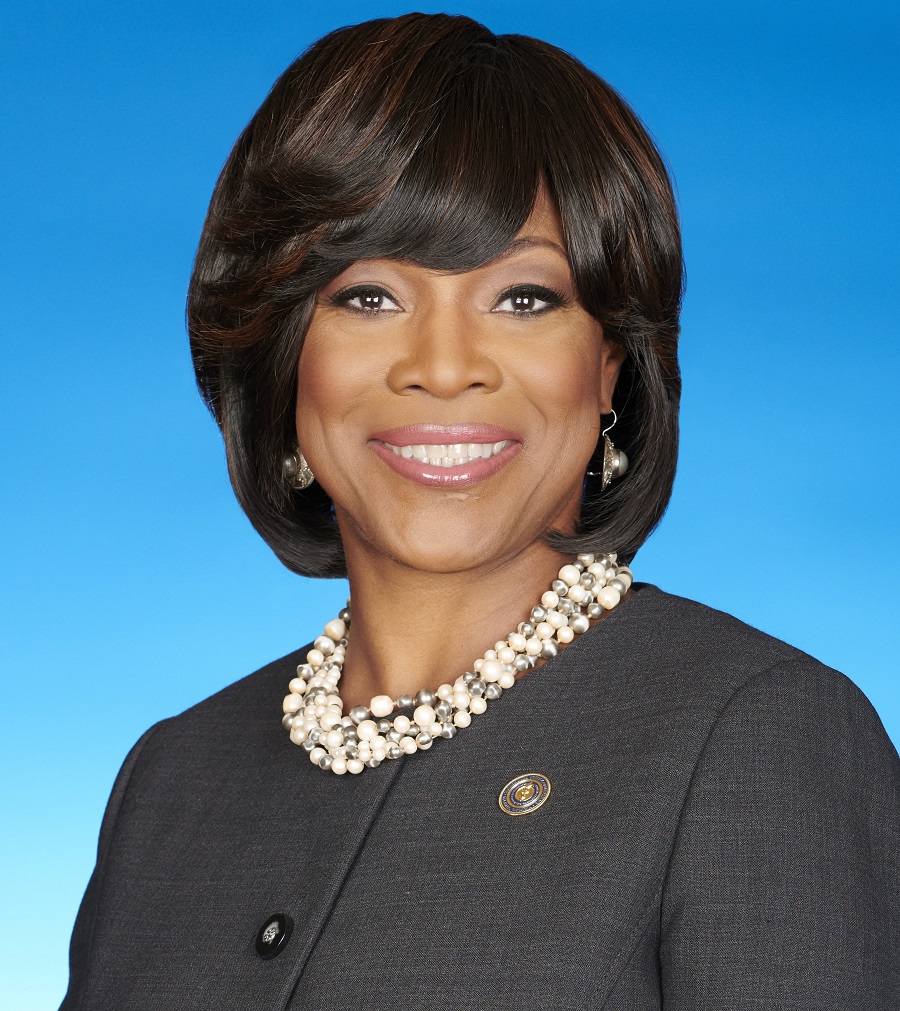Dr. Valerie Montgomery Rice: The Silver Lining for Health Equity in the COVID-19 Pandemic
As President and CEO of Morehouse School of Medicine, Dr. Valerie Montgomery Rice writes about the need for health equity and what her institution is doing to close the gap for underserved populations.
 Dr. Valerie Montgomery Rice
Dr. Valerie Montgomery Rice
President & CEO, Morehouse School of Medicine
As COVID-19 transitions from pandemic to endemic, health experts will no doubt launch hundreds of research studies on the impact of this once-in-a-century global health crisis. At the top of the list will be an assessment of the response to the pandemic that resulted in more than a million deaths in the United States alone, with persisting disparities in cases and deaths for Black and Hispanic people: Black people were twice as likely to die from COVID and nearly three times more likely to contract the disease than their white counterparts.
A leading cause of those health disparities is the historical lack of access to healthcare in Hispanic and Black communities. For example, Black Americans suffer more from chronic diseases like diabetes and hypertension than other demographic groups. Blacks have higher incidences of cancer and maternal death and are more likely to die at a younger age than their white counterparts. COVID-19 has shined a glaring light on the health inequities in this country, igniting a host of new initiatives designed to close the gap for underserved populations.
Why We Need More Black Physicians
Among those initiatives are renewed efforts to increase the number of minority physicians and other healthcare professionals in the US. According to a 2019 report by the Association of American Medical Colleges, Black physicians comprise 5% of all physicians in the US, even though Blacks comprise 13% of the country’s population. For the first time in 15 years, the number of African American students entering medical school increased to 21% percent, from 2,124 to 2,562. While this is good news, the overall percentages of Black physicians and medical students have not changed dramatically since Morehouse School of Medicine was founded more than 45 years ago. A startling statistic is that the nation’s four Historically Black Medical Schools have graduated more Black physicians over the last 10 years than the top 10 non-HBCU medical schools combined.
More importantly, studies have shown that an increase in Black physicians will directly and positively impact the health of Black patients. We know that Black patients have better health outcomes in almost every medical discipline when cared for by a Black physician. A recent peer-reviewed study from George Mason University, published in the Proceedings of the National Academy of Sciences (PNAS), found that the mortality rate of Black babies decreased between 38 percent to 58 percent when they were cared for by Black physicians versus white physicians. The mortality rate for white babies was not impacted by the race of the doctor caring for them.
We can all debate the myriad cultural, psychological, and medical reasons why Black patients have better health when treated by Black physicians. However, the fact remains that the lack of physicians and other healthcare professionals of color contributes to the reluctance among minority groups, particularly Black males, to go to the doctor. This phenomenon is exacerbated by a continued lack of representation of Black male medical students. In 2018, only 570 students entering medical school were Black males, a ratio of three to one compared to Black females. If we are to get more Black males into medical school and thereby increase the number of Black physicians and other minority healthcare professionals, we must be intentional and honest and recognize that the solution demands a systemic cultural shift.
How Are We Cultivating Interest Among Young People?
We must ask ourselves, as leaders, how are we cultivating and supporting the need for more physicians of color? An initial plan is to start conversations about a desire to work in healthcare during children's formative years. For many people, the desire to become a physician begins early in their lives. It may be for different reasons: admiring a family member who is a physician, working as a candy striper at a hospital, or hoping to right an injustice observed while watching a loved one be denied care. Or it could be simply an innate desire to heal.
How are we inserting ourselves into the cycle to grow the healthcare field?
The common thread to this noble calling is that the desire must be nurtured first by those who see the potential in a person. And that starts by involving children in elementary school science projects, enrolling them in STEM programs, and giving them opportunities to immerse themselves in challenging scientific endeavors from middle school through high school. These activities will help inspire future physicians with a thirst and passion for science and learning, helping them meet and overcome the academic challenges of college and medical school as they pursue a medical degree or other health professions. This is why Morehouse School of Medicine takes an active role in STEM education in Atlanta-area schools. We know that some of today’s K-12 students will attend Morehouse School of Medicine in the future, and we have evidence of the impact of those early partnerships with students enrolled in our programs now.
Identifying and Developing Talent in HBCUs
There must also be intentionality in the creation of a robust pipeline. We need to work with undergraduate institutions, particularly Historically Black Colleges and Universities (HBCUs), to identify and help develop promising Black potential medical students. This should be a comprehensive approach, from building vital pre-med programs at a cross-section of HBCUs to assisting students in preparing for and performing well on the MCAT. For example, while Black men often score better on their first MCAT, if they don’t pass, they fail to try again at a higher percentage than Black women.
We must also move beyond “scoreism” — if we judge students only by their MCAT scores, we do not give full weight to their potential to become competent physicians. Like most multiple-choice standardized tests, MCAT and Step exams assess abstract problem-solving skills. While such tests have their roots in aptitude tests, the work of James Flynn documents how these skills can be taught and coached. This is not an issue of two months of exam preparation but a matter of developing the habit of asking how and why while learning — not just who and what. Many students from less resourced backgrounds are in educational settings that discourage the development of the critical thinking skills relevant to these tests. Morehouse School of Medicine has a milieu of mentoring, role models, high support, and high expectations. We have a curriculum structure that does not rush through topics.
Finally, we need to invest in our Historically Black Medical Schools to help them expand and grow. Morehouse School of Medicine receives 7,000 applications for 100 seats in our first-year class each year. We are in the process of adding 25 more seats to our first-year class and working to obtain the resources to grow our classes further. Imagine the impact we could have if we could afford to bring in 200 first-year students. And it is not just physicians; we need more Black nurses and other healthcare practitioners. Morehouse School of Medicine has new efforts to increase minority professionals in all three categories.
A Promising Partnership
The More In Common Alliance — our partnership with CommonSpirit Health — has the potential to ensure that a minimum of 300 clinicians from Black and other minority communities underrepresented in healthcare complete residencies each year. The initiative will open five regional campuses and graduate medical education programs in 10 markets with CommonSpirit facilities. The collaboration will also allow Morehouse School of Medicine to expand its student population by 6% each year over the course of five years. It will also help develop research programs to address illnesses that disproportionately affect Blacks, such as sickle cell disease.
The More in Common Alliance is a 10-year, $100 million initiative to increase cultural competency and expand representation to improve patient access and quality of care. We are establishing three undergraduate medical student sites at CommonSpirit hospitals in Chattanooga, Tennessee, Lexington, Kentucky, and Seattle, and four post-graduate residencies and fellowships in California in Bakersfield, Los Angeles, Santa Cruz, and Ventura County, with more to come.
Developing Advanced Nursing Programs at Morehouse School of Medicine
In addition, Morehouse School of Medicine is laying the foundation to launch a new Advanced Nursing Practitioner program that will help diversify and increase the number of bedside nurses to meet demand and expand the pool of nurse leaders to help address systematic health inequity in underserved communities.
Under the program, Morehouse School of Medicine will offer both a Master of Science in Nursing and a Doctor of Nursing Practice (DNP) degree required for an Advanced Practice Registered Nurse license. It is hoped the new program will launch in two years.
These programs continue the proud legacy of Morehouse School of Medicine to serve on the front lines of the fight to reduce health disparities in urban and rural communities. Our expansion is a positive outcome from a disastrous global health crisis. Hopefully, it will mitigate the impact of future health pandemics and endemics on underserved populations worldwide, ensuring that those who fight for care and those who deliver care are never alone.
This article is from the Elsivier Connect Not Alone newsletter, a monthly publication that showcases new perspectives on global issues directly from research and academic leaders.

